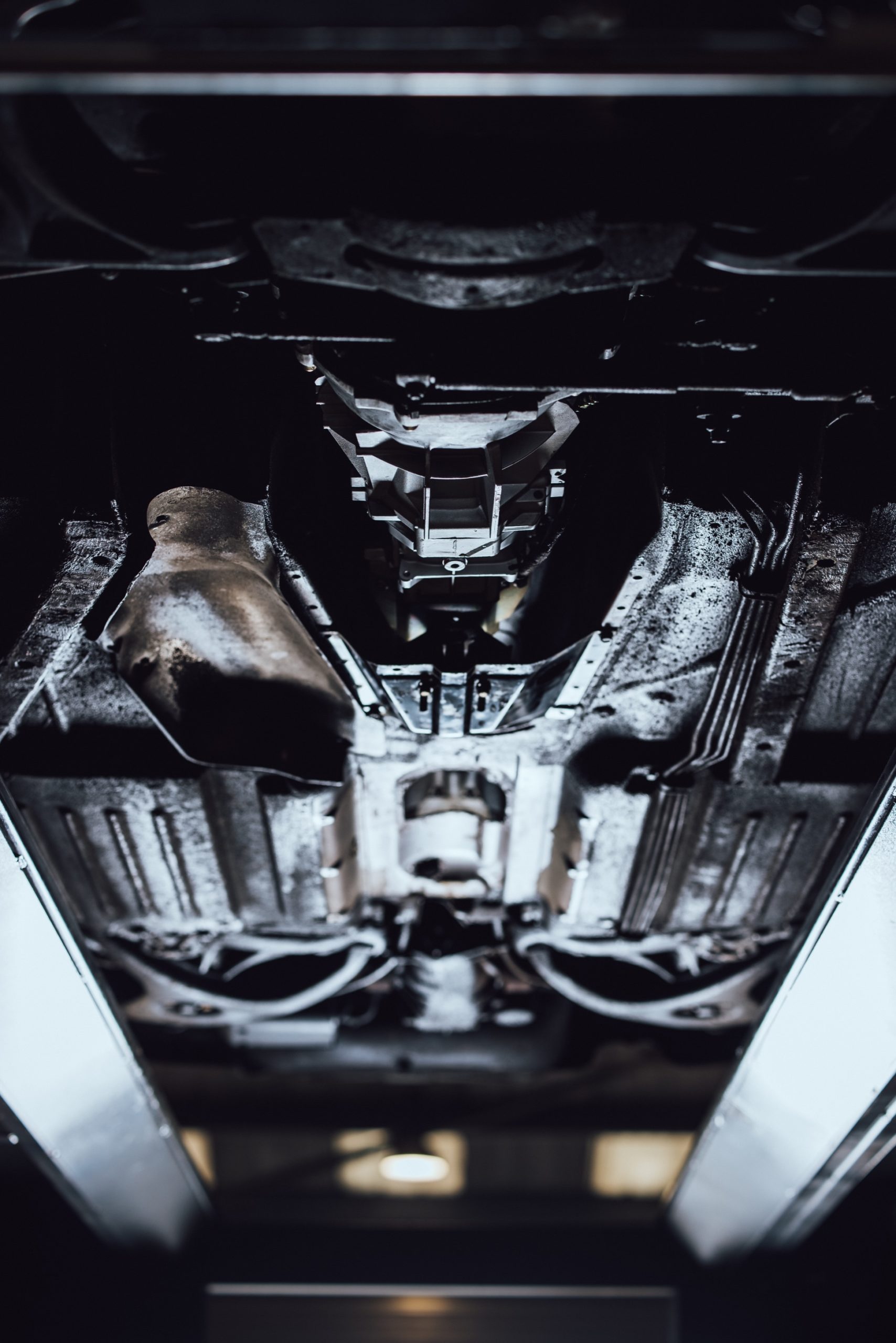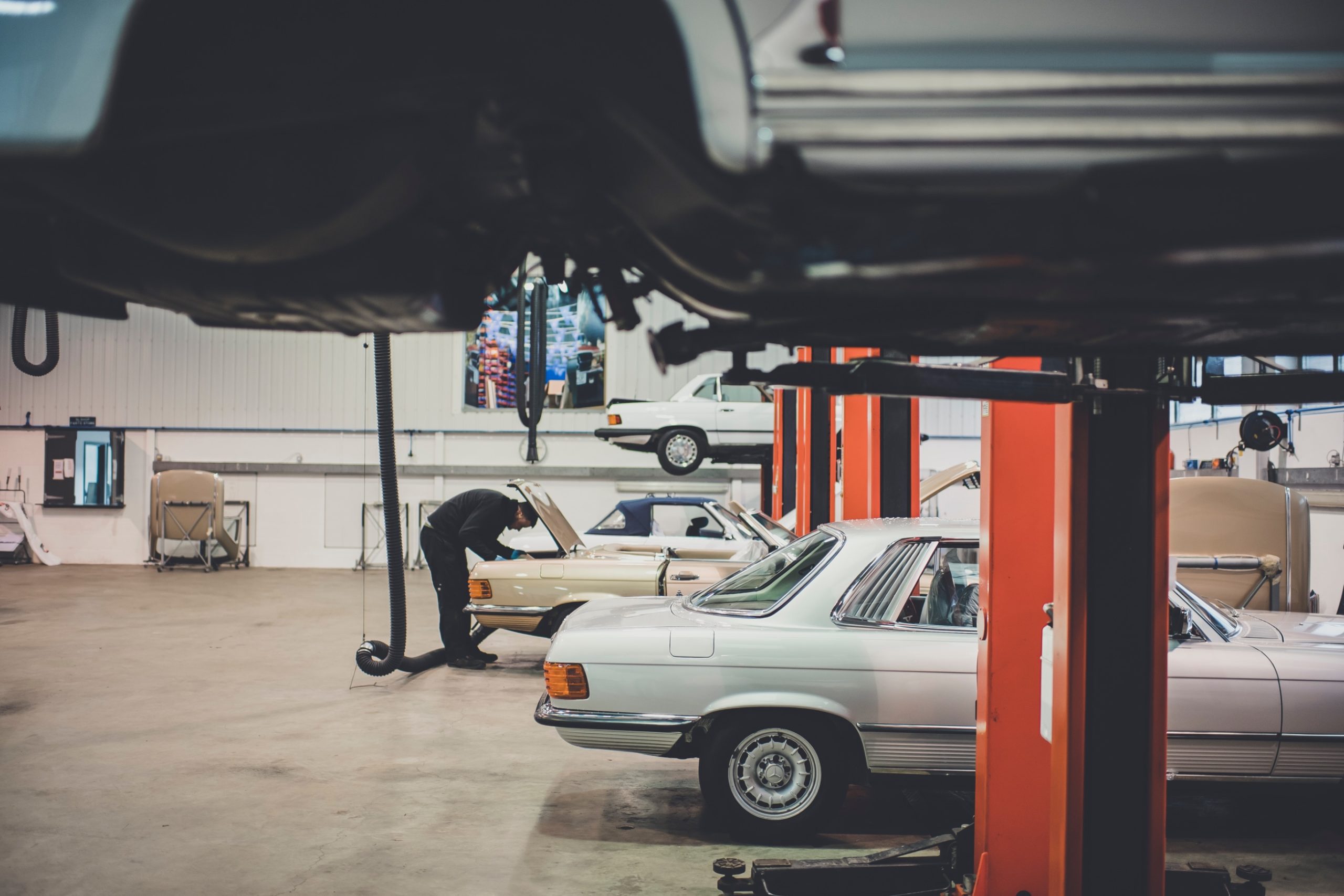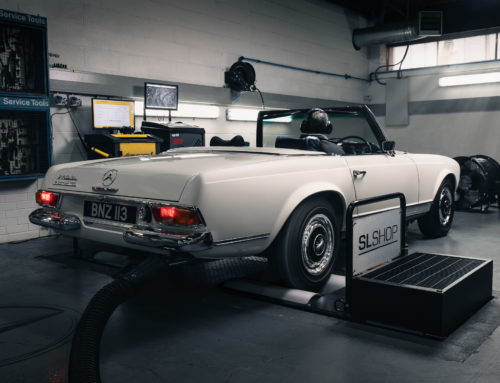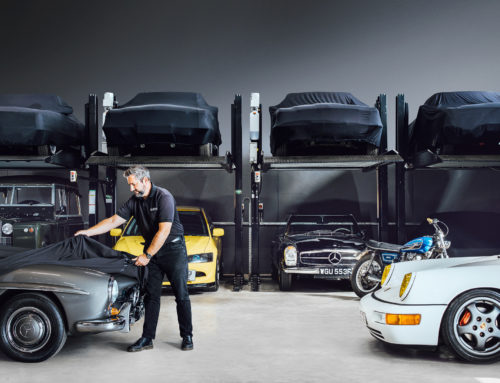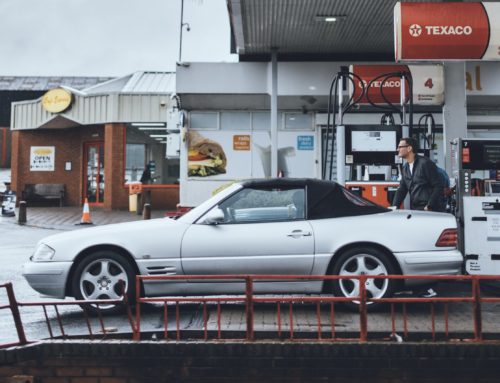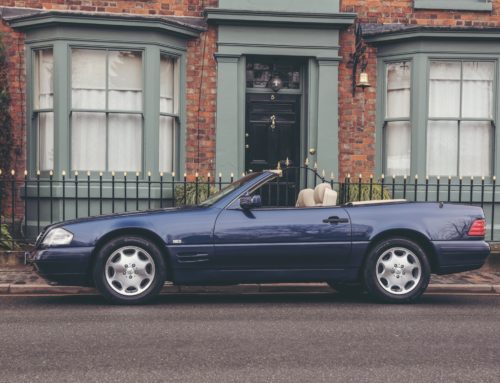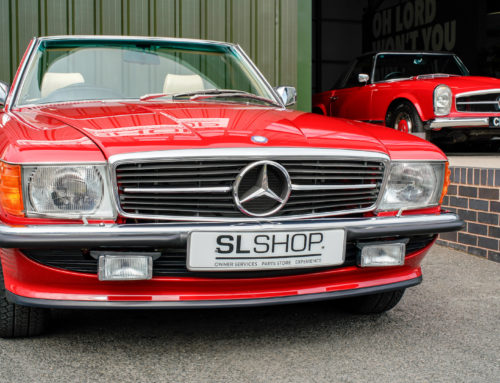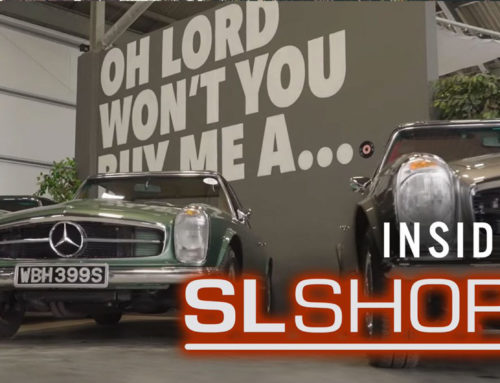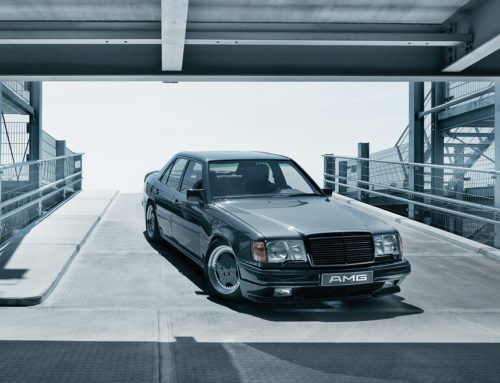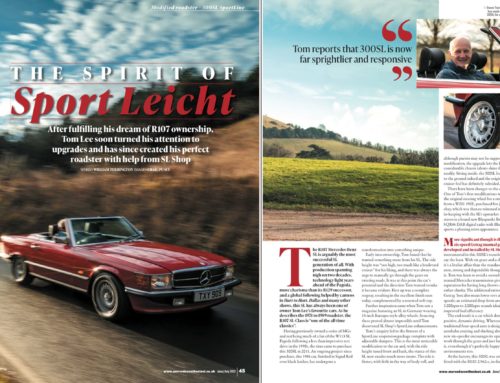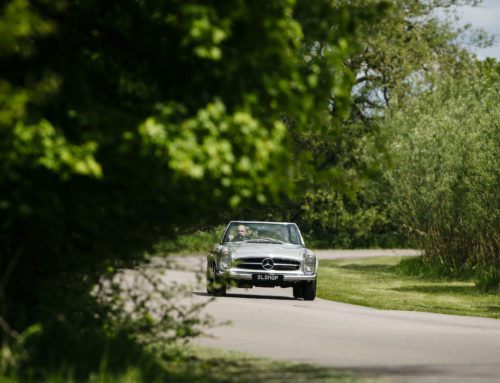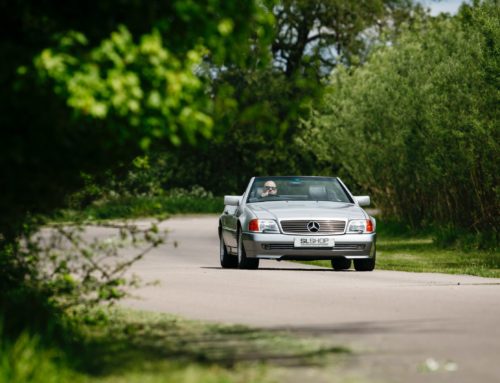A closer look at Mercedes automatic gearbox problems with the 1960s – 1990s transmissions. Coal-face advice from some of the UK’s most experienced Mercedes-Benz technicians.
With the 2022 record-smashing sale of the 1956 Mercedes-Benz 300 SLR – of which only two were made – interest and investment in other Mercedes-Benz SLs have been given a vitamin B12 shot. Sold for an eye-watering $142.7 million, more than twice the old record, the Uhlenhaut 300SLR re-enforced the Stuttgart marque as one of the world’s most desirable brands, and from an automotive investment point of view, a consistent and reliable no-brainer.

The SL range, birthed by the 1954 300SL Gullwing and Roadster, however, didn’t necessarily need the 300SLR’s popularity boost. Sales figures and retail values of not only the hens-teeth-rare and massively expensive 300SLs, but also the W121 190SL and the W113 Pagoda have been on the rise for some time. On the back of that momentum, the R107, built from 1971 to 1989, is now enjoying a swell in popularity with good examples growing in value. SLs have always been the best-engineered two-seat sports car money can buy. Not always the fastest and perhaps not as track-focused as other options, an SL has almost always been better built, a peerless cruiser with more than sufficient power and an impressively reliable, solid investment, not to mention seriously beautiful, exclusive, and desirable.
But regardless of the build quality – the exacting engineering and class-leading quality control – mechanical problems do arise. All machines have a lifespan, and they all need maintenance. Furthermore, gearboxes are often overlooked when budgeting for annual services. While most motorists and classic car enthusiasts understand the need for the engine to receive oil and filters regularly, the gearbox often remains ‘out of sight, out of mind.’
Paul Smith was trained by Mercedes-Benz, focusing on gearboxes on the pre-electronic models. His move to SLSHOP a few years ago is part of the company’s drive to position SLSHOP as the UK’s leading retail and technical centre for classic SLs (and other vintage MB models). Paul has spent the better part of three decades elbow-deep in toxic, unchanged gearbox oil, tortured synchros and tormented value chests. So, what causes Mercedes automatic gearbox problems and specifically, not to change gears properly?
Talking with Paul about common problems with the K4C 025 (K4A 025 if the car is older than 1969) gearboxes fitted to the W113 Pagodas, and the famous 722 series fitted to the R107 (1971 – 1989), it’s clear that, in his experience, the bones of these units are super-solid. With mileage-appropriate servicing and reminding yourself that you’re not Lewis Hamilton and your SL is not an F1 car, you’ll likely enjoy many trouble-free miles.
“Most of what we see could easily be prevented by scheduled maintenance. Some of it is abuse,” says Smith.
Paul provides a summary of which Mercedes automatic gearbox problems he sees regularly:
1. Seized or sticking double-acting solenoid.
When a solenoid is seized, the three fundamental pressures in the transmission cannot be regulated. Applying lubricant will usually return freedom of movement.
2. Poorly adjusted control rod between double-acting solenoid and modulating pressure transmitter.
If the basic pressure in the transmission is not increased from 0.9 bar to 2.8 when the throttle is moved off the engine idle position, the transmission will slip to the point the vehicle will not drive/move. A pressure test will indicate if the control rod is poorly adjusted.
Another symptom of poor rod adjustment is the box failing to kickdown – when a pressure of 4.8 bar cannot be attained.
3. The throttle position switch is faulty or poorly adjusted.
The throttle position is transmitted to the double-acting solenoid via a throttle position switch on the throttle body. If the switch is faulty or poorly adjusted, you will experience similar symptoms as in point 2. The replacement switch, unfortunately, is pricey and can cost £1,000 for an original component.
4. General shifting issues, including engine racing/slipping during upshifts, irregular shifting and loss of certain gears.
Generally, the cause is contamination – check by first draining the oil. A burnt-out clutch pack will result in black or burnt oil – you may smell it, or after removing the sump pan on the transmission, you will notice large amounts of black debris/abrasive dust will be present. This will require the transmission to be removed from the vehicle and undergo a complete refurbishment, including full strip-down and cleaning of the valve chest.
Regarding parts availability, generally, the older the car, the longer the wait times. Mercedes-Benz Germany still stocks parts, but not the entire catalogue. The SL Shop has a healthy list of factory-approved, independent manufacturing companies – mostly based in Germany – that build OEM spec parts unavailable from the factory.
Paul moves on to the 722 series fitted to the R107. The model numbers, as development progressed, are 722.0, 722.1 and 722.2. Similarly to the GA (Pagoda) type transmission, a lack of maintenance and driver misuse are the main culprits.
1. Transmission slipping caused by low oil level because of an oil leak not being rectified.
Low oil can result in a burnt-out clutch pack and a slipping transmission. As before, we remove the sump pan to inspect for abrasive dust. Removal and stripping of the transmission is the only option.
2. Slipping when pulling away/delay in kickdown/delay of power after engaging drive or reverse.
We remove and inspect the valve chest to check the gasket for splitting, warping or corrugations (this last one is often caused by a lack of use). A new, modified gasket will be required if any faults are found. Modified gaskets were fitted as standard as of Feb 1978.
3. Slipping 2nd to 3rd gear (up to 1978).
A possible cause is an incorrectly adjusted modulating pressure. We check this by connecting pressure gauges to the vehicle and monitoring the valves when the car is being driven (not stationary). Alternatively, you can fit a modified modulatory valve (although this part is difficult to find) and/or fitting modified friction plates in the clutch packs. This would require the removal and stripping of the transmission. Modified plates were fitted as of Feb 1975.
Paul Smith has described a common theme: maintenance. The SL Shop’s technical department is always happy to explain how often a Mercedes’ gearbox be serviced.
With the classic Mercedes-Benz market continuing to retain momentum and growth, the public and the trade are looking to establish preferred partners to help keep their investments running reliably. With this unfailing commitment to these highly specialised technical competencies, SL Shop should be in every classic Merc owner’s contact list.
A closer look at Mercedes automatic gearbox problems with the 1960s – 1990s transmissions. Coal-face advice from some of the UK’s most experienced Mercedes-Benz technicians.
With the 2022 record-smashing sale of the 1956 Mercedes-Benz 300 SLR – of which only two were made – interest and investment in other Mercedes-Benz SLs have been given a vitamin B12 shot. Sold for an eye-watering $142.7 million, more than twice the old record, the Uhlenhaut 300SLR re-enforced the Stuttgart marque as one of the world’s most desirable brands, and from an automotive investment point of view, a consistent and reliable no-brainer.

The SL range, birthed by the 1954 300SL Gullwing and Roadster, however, didn’t necessarily need the 300SLR’s popularity boost. Sales figures and retail values of not only the hens-teeth-rare and massively expensive 300SLs, but also the W121 190SL and the W113 Pagoda have been on the rise for some time. On the back of that momentum, the R107, built from 1971 to 1989, is now enjoying a swell in popularity with good examples growing in value. SLs have always been the best-engineered two-seat sports car money can buy. Not always the fastest and perhaps not as track-focused as other options, an SL has almost always been better built, a peerless cruiser with more than sufficient power and an impressively reliable, solid investment, not to mention seriously beautiful, exclusive, and desirable.
But regardless of the build quality – the exacting engineering and class-leading quality control – mechanical problems do arise. All machines have a lifespan, and they all need maintenance. Furthermore, gearboxes are often overlooked when budgeting for annual services. While most motorists and classic car enthusiasts understand the need for the engine to receive oil and filters regularly, the gearbox often remains ‘out of sight, out of mind.’
Paul Smith was trained by Mercedes-Benz, focusing on gearboxes on the pre-electronic models. His move to SLSHOP a few years ago is part of the company’s drive to position SLSHOP as the UK’s leading retail and technical centre for classic SLs (and other vintage MB models). Paul has spent the better part of three decades elbow-deep in toxic, unchanged gearbox oil, tortured synchros and tormented value chests. So, what causes Mercedes automatic gearbox problems and specifically, not to change gears properly?
Talking with Paul about common problems with the K4C 025 (K4A 025 if the car is older than 1969) gearboxes fitted to the W113 Pagodas, and the famous 722 series fitted to the R107 (1971 – 1989), it’s clear that, in his experience, the bones of these units are super-solid. With mileage-appropriate servicing and reminding yourself that you’re not Lewis Hamilton and your SL is not an F1 car, you’ll likely enjoy many trouble-free miles.
“Most of what we see could easily be prevented by scheduled maintenance. Some of it is abuse,” says Smith.
Paul provides a summary of which Mercedes automatic gearbox problems he sees regularly:
1. Seized or sticking double-acting solenoid.
When a solenoid is seized, the three fundamental pressures in the transmission cannot be regulated. Applying lubricant will usually return freedom of movement.
2. Poorly adjusted control rod between double-acting solenoid and modulating pressure transmitter.
If the basic pressure in the transmission is not increased from 0.9 bar to 2.8 when the throttle is moved off the engine idle position, the transmission will slip to the point the vehicle will not drive/move. A pressure test will indicate if the control rod is poorly adjusted.
Another symptom of poor rod adjustment is the box failing to kickdown – when a pressure of 4.8 bar cannot be attained.
3. The throttle position switch is faulty or poorly adjusted.
The throttle position is transmitted to the double-acting solenoid via a throttle position switch on the throttle body. If the switch is faulty or poorly adjusted, you will experience similar symptoms as in point 2. The replacement switch, unfortunately, is pricey and can cost £1,000 for an original component.
4. General shifting issues, including engine racing/slipping during upshifts, irregular shifting and loss of certain gears.
Generally, the cause is contamination – check by first draining the oil. A burnt-out clutch pack will result in black or burnt oil – you may smell it, or after removing the sump pan on the transmission, you will notice large amounts of black debris/abrasive dust will be present. This will require the transmission to be removed from the vehicle and undergo a complete refurbishment, including full strip-down and cleaning of the valve chest.
Regarding parts availability, generally, the older the car, the longer the wait times. Mercedes-Benz Germany still stocks parts, but not the entire catalogue. The SL Shop has a healthy list of factory-approved, independent manufacturing companies – mostly based in Germany – that build OEM spec parts unavailable from the factory.
Paul moves on to the 722 series fitted to the R107. The model numbers, as development progressed, are 722.0, 722.1 and 722.2. Similarly to the GA (Pagoda) type transmission, a lack of maintenance and driver misuse are the main culprits.
1. Transmission slipping caused by low oil level because of an oil leak not being rectified.
Low oil can result in a burnt-out clutch pack and a slipping transmission. As before, we remove the sump pan to inspect for abrasive dust. Removal and stripping of the transmission is the only option.
2. Slipping when pulling away/delay in kickdown/delay of power after engaging drive or reverse.
We remove and inspect the valve chest to check the gasket for splitting, warping or corrugations (this last one is often caused by a lack of use). A new, modified gasket will be required if any faults are found. Modified gaskets were fitted as standard as of Feb 1978.
3. Slipping 2nd to 3rd gear (up to 1978).
A possible cause is an incorrectly adjusted modulating pressure. We check this by connecting pressure gauges to the vehicle and monitoring the valves when the car is being driven (not stationary). Alternatively, you can fit a modified modulatory valve (although this part is difficult to find) and/or fitting modified friction plates in the clutch packs. This would require the removal and stripping of the transmission. Modified plates were fitted as of Feb 1975.
Paul Smith has described a common theme: maintenance. The SL Shop’s technical department is always happy to explain how often a Mercedes’ gearbox be serviced.
With the classic Mercedes-Benz market continuing to retain momentum and growth, the public and the trade are looking to establish preferred partners to help keep their investments running reliably. With this unfailing commitment to these highly specialised technical competencies, SL Shop should be in every classic Merc owner’s contact list.
More from Journal
CARE
THE ULTIMATE CERTIFIED SERVICING INVESTMENT PLAN
Your ownership journey matters to us, which is why we have created a simple certified servicing investment plan, tailored to your individual needs and aspirations.
Start investing today and our dedicated CARE team will work with you to increase the value and enjoyment you receive from your vehicle.

STAY IN TUNE WITH SLSHOP MOMENTS
As part of SLSHOP’s community of enthusiasts, you’ll be the first to hear about events and tours, key product offers, exciting stories from owners around the world and of course… our latest additions to the showroom. So, be the first to know and you might just sneak a car on your driveway or take your car’s condition to new heights with our exclusive replacement parts.
Or, visit SLSHOP Journal


